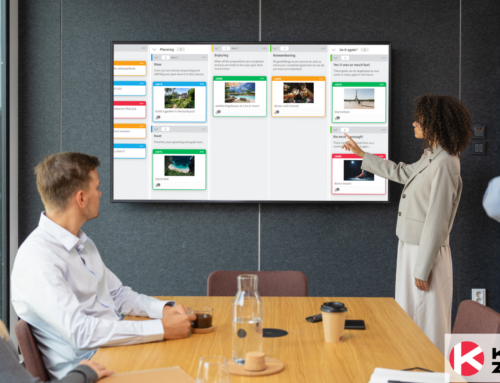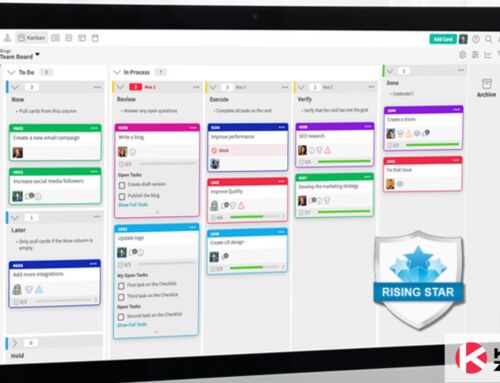
Before the tragic events of 2020, most firms had a one-track approach to work; they would hire in-person employees, and have them work together for nearly forty hours a week. There was hardly any talk about hybrid work. Looking back now, it may seem impossible that such conditions were so prevalent. But it was, and it was in place for so long because it was a tested and trusted system. It wasn’t perfect, of course, but it delivered results.
However, things have changed. Remote work has become the immediate solution for organizations to make sure it’s business as usual. Companies have now discovered that although in-person working conditions may be beneficial to a degree, the hybrid work model does offer more benefits.
A great example of an industry where the hybrid system solves real problems for firms is cybersecurity. From 2013 to 2021, the number of unfilled cybersecurity jobs has risen to about three million. This means that cybersecurity companies are often on the hunt for new talent. Sadly, because of geographical constraints, many talented engineers and developers have found it difficult to be recruited by firms in dire need of their talents.
Thankfully, that was only a problem in a world where the hybrid system was a fringe working model. Today, it isn’t. Companies that are implementing a hybrid work style have widened the pool of talent they can fish from. There are now so many ways for employees to solve geographical constraints that it’s no longer an issue.
The existence of the hybrid work model in itself doesn’t guarantee that companies will find it easy to implement the system. After all, it’s a radical departure from the regular style of work and will require some getting used to.
But first, what exactly is the hybrid system?
What Is Hybrid Work?
For those who don’t know, hybrid work is simply a work style where employees can choose where they would like to work. It’s typically a balance between home and the office, like working at the office when needed and then shift to remote work. The success of the system largely depends on how well physical workers and virtual workers can get along to deliver on tasks and be productive.
Four Hybrid Work Best Practices to Consider in 2021
1. Make Remote Channels the Digital HQ
Many companies that are implementing hybrid work styles seem to do it like it’s a stop-gap measure for when all employees can return to physical work. Even the ones who don’t think that, are behaving like they do. Sadly, this half-hearted attempt at building a hybrid work environment will only backfire.
To give your hybrid work style the greatest chance at success, you have to be all in. And by all in, you have to treat the online platform you’re using for remote work as the company’s HQ. It should be a one-stop destination for everything and anything any worker anywhere would require to complete their jobs. There should also be very minimal work discussion happening outside it— yes, even if you’re a physical worker and are in the office with the rest of the team. This gives the remote workers a sense of belonging, and allows them to have the knowledge of every single detail they should know to have that complete work experience.
2. Create A Single Company Culture
One of the biggest problems employers find with hybrid work, and the added advantage of being able to hire from anywhere in the world, is the clash of cultures that often happens in virtual workspaces. The best way to minimize this, is to implement an internal culture distinct to the workplace.
You‘ll need to streamline the training and onboarding process of new employees, and thoroughly educate them on cultural expectations. You should consider training for existing employees as well, to help them become acquainted with the new internal culture.
Additionally, you should review the incentives/benefits system (if you have one), and ensure that both physical and online workers are getting rewarded according to their work. It doesn’t stop there either. Other decisions like promotions, training, and task assignment must be done in line with fair and transparent guidelines that will show that both online and physical workers are valued just the same.
3. Define Communication Channels
The fact that employers have “access” to virtual workers at all times doesn’t mean that they should be contacted at all times. During the onboarding process, it’s important to define the tools and methods that will be used in communication. That way, there is no confusion whatsoever about how workers expect to communicate with employers, and how employees are supposed to communicate with their superiors.
If the Internal communication system will be developed in-house, it’s important that the IT team tests it first, and knows it backward and forwards. This is to avoid any costly mistakes when the system is eventually rolled out and used for company-wide communication.
4. Meetings Shouldn’t Feel Half Baked
Many companies operating the hybrid model tend to pay more attention to physical meetings than to virtual meetings. While it’s easier to recognize people who are physically present, managers need to understand that they cannot let virtual workers feel left out. One way to solve this problem is by installing webcams and monitors in conference rooms that allow remote workers to not only see what’s happening in the meeting but also be seen by their colleagues.
Additionally, remote workers should also have easy access to meeting agenda and minutes anytime. To help you make sure that meeting documents and other relevant files are accessible to your remote employees, you should set up a virtual file organization and a meeting board that is shared with everyone in the organization. A cloud-based file storage system and a virtual Kanban board can make file sharing and task management easier for everyone in the team.
Looking to Streamline Your Hybrid Work Processes?
Kanban Zone is fully capable of providing extreme Agile solutions to businesses. We help you develop the model that works for your organization. Visit our Agile Transformation Services today and make a difference in your organization’s hybrid work style!
Learn to Work Smarter, Not Harder!
Get our top articles weekly.
Table Of Contents
Discover many more posts…







